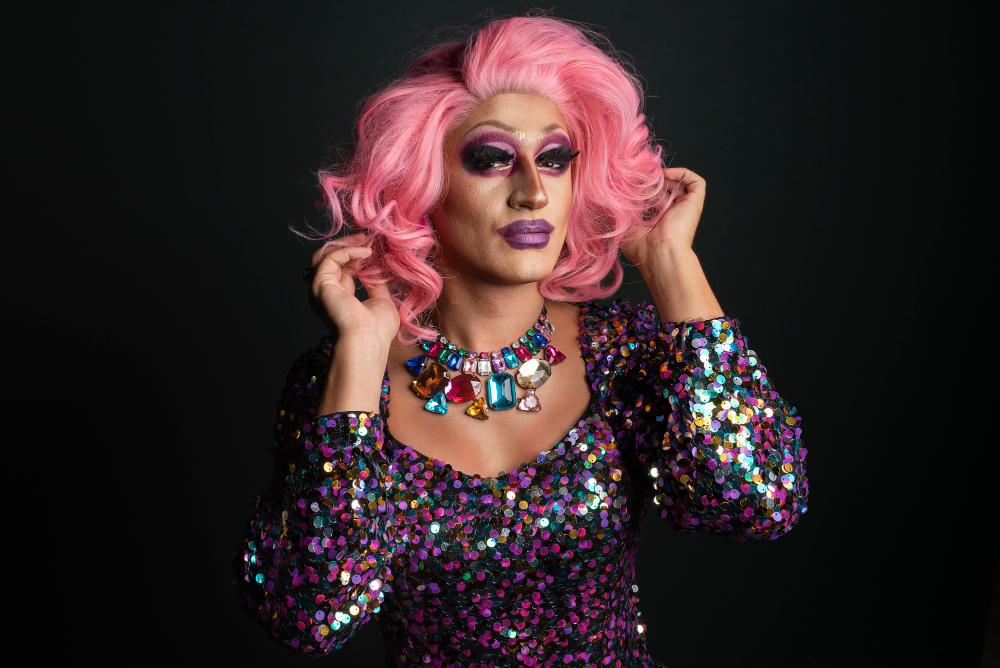When watching a drag show, people might see sequins, lip syncs, wigs, and theatrical punchlines. But beneath the stage lights lies a sophisticated network in which today’s drag entertainers operate as performers, as brands, media creators, and business strategists. In 2025, drag is commerce, media, and culture all rolled into one.
Drag’s mainstream visibility has grown markedly in recent years. Despite some headwinds and rising cultural tensions, the art form continues to expand across screens, stages, and consumer space. The spectacle proves resilient and lucrative.
The silent engines behind the glamour
What the audience sees on stage is only a fragment of what drag professionals manage behind the curtain. Offstage, these artists navigate a complex network of platforms, contracts, and content strategies that fuel their careers. It’s a mix of creativity and commerce. Behind every polished performance is a structure of decisions like what to share, where to tour, which brand to align with. That often mirrors the work of entrepreneurs or creative directors in any high-stakes industry.
Monetising persona & content
Many drag artists now leverage platforms like TikTok, YouTube, Patreon, and podcasting to monetize behind‑the‑scenes life, tutorials, fashion, and commentary. Their social media audiences often rival niche influencers in beauty, fashion, or media. These channels allow direct patronage via memberships, tips, merchandise sales, or exclusive content. This emphasis on high-quality visuals and content strategy mirrors the wider cultural movement, where storytelling through imagery has become central to how audiences connect with performance, identity, and creative work.
In 2025, drag queen Bita Filter in New York reported a 60 % drop in corporate event bookings compared to prior years. That forced her to pivot more aggressively toward content, partnerships, and brand collaborations.
Performance as IP (intellectual property)
Top drag entertainers treat their stage persona as IP: names, catchphrases, looks, and show concepts can be trademarked, licensed, or adapted into merchandise, guest appearances, and media roles. Some queens now negotiate equity or profit share with shows, television appearances, or touring productions.
Touring itself has become a more controlled business model. Queens performing solo often package their acts with merchandise, VIP meet‑and‑greet tiers, and exclusive add-ons (e.g. backstage access or personalized shout‑outs). One example: Baga Chipz’s 2025 UK tour, called Chip Off The Old Block, is scheduled from August to October, combining live vocals, audience interaction, and branded experiences.
Partnerships & Brand Collaborations
Drag artists mature into multi‑dimensional brands, so their ability to partner meaningfully with companies becomes a crucial toolkit. Unlike one-off endorsements, these collaborations often reflect a deeper alignment of personality, audience, and aesthetic.
Strategic brand partnerships have become an important avenue for drag performers to extend their influence beyond the stage. The collaboration between Baga Chipz and Pink Casino, showcases how drag entertainers are being tapped for their ability to embody brand personality in fresh, culturally relevant ways. Known for her larger-than-life presence and quotable humour, Baga Chipz becomes a face that aligns with the platform’s goal to deliver engaging online experiences and playful identity. That agreement bundles content, character alignment, and marketing synergy.
Beyond this high‑profile tie-up, other drag artists are forming partnerships in unexpected domains. In 2025, TrivWorks partnered with drag performer Frankie Cyanide to lead corporate trivia, bingo, and themed entertainment sessions for private and corporate audiences. These partnerships illustrate how drag talent can be embedded into brand activations that engage through humour, performance, and persona.
Scaling business operations & management
Drag entertainers when they elevate careers begin to operate like lean creative enterprises. Behind the scenes, they build support networks. Those are agents, managers, legal advisors, photographers, videographers, stylists, and social media strategists. That helps them to handle the demands that success brings. In 2025, some drag artists have adopted fractional teams or creative collectives. Those are smaller groups of specialists who contribute remotely or on a project basis.
Licensing and media engagement offer powerful expansion routes. A growing number of drag professionals lease their show formats or characters to regional producers. They may grant the rights for local versions of a performance, or collaborate on branded productions. Some secure residencies in established venues, theme parks, or immersive venues.
TV appearances and guest‑judging roles contribute to reputation and reach. In 2025, the Canadian series Drag Brunch Saved My Life debuted on Crave, bringing drag performance and design storytelling to a broader audience. This kind of cross‑media exposure helps turn stage presence into a platform that supports ancillary deals.
Future horizons & innovation
Drag performers are exploring digital stages from virtual shows to avatar-led performances in metaverse platforms. NFT projects have moved from hype to function in 2025, with artists offering access-based tokens tied to performances or exclusive content. Phygital bundles, like digital passes paired with signed merchandise, are popular. These innovations allow entertainers to maintain a global reach with scalable, cost-effective formats.
Merchandise is also important in brand growth. Personalised collections ranging from eco‑friendly apparel to limited‑run collectibles, reflect a strategic effort to turn drag personas into fully realised lifestyle brands. Recent industry data values the global promotional products market at around USD 26.55 billion in 2025, underscoring the continued demand for artist-led merchandise and branded experiences.
Beyond product and performance, drag entertainers in 2025 remain central figures in cultural conversations. They are seen as public commentators, appearing in editorial campaigns, broadcast panels, and advocacy spaces.

